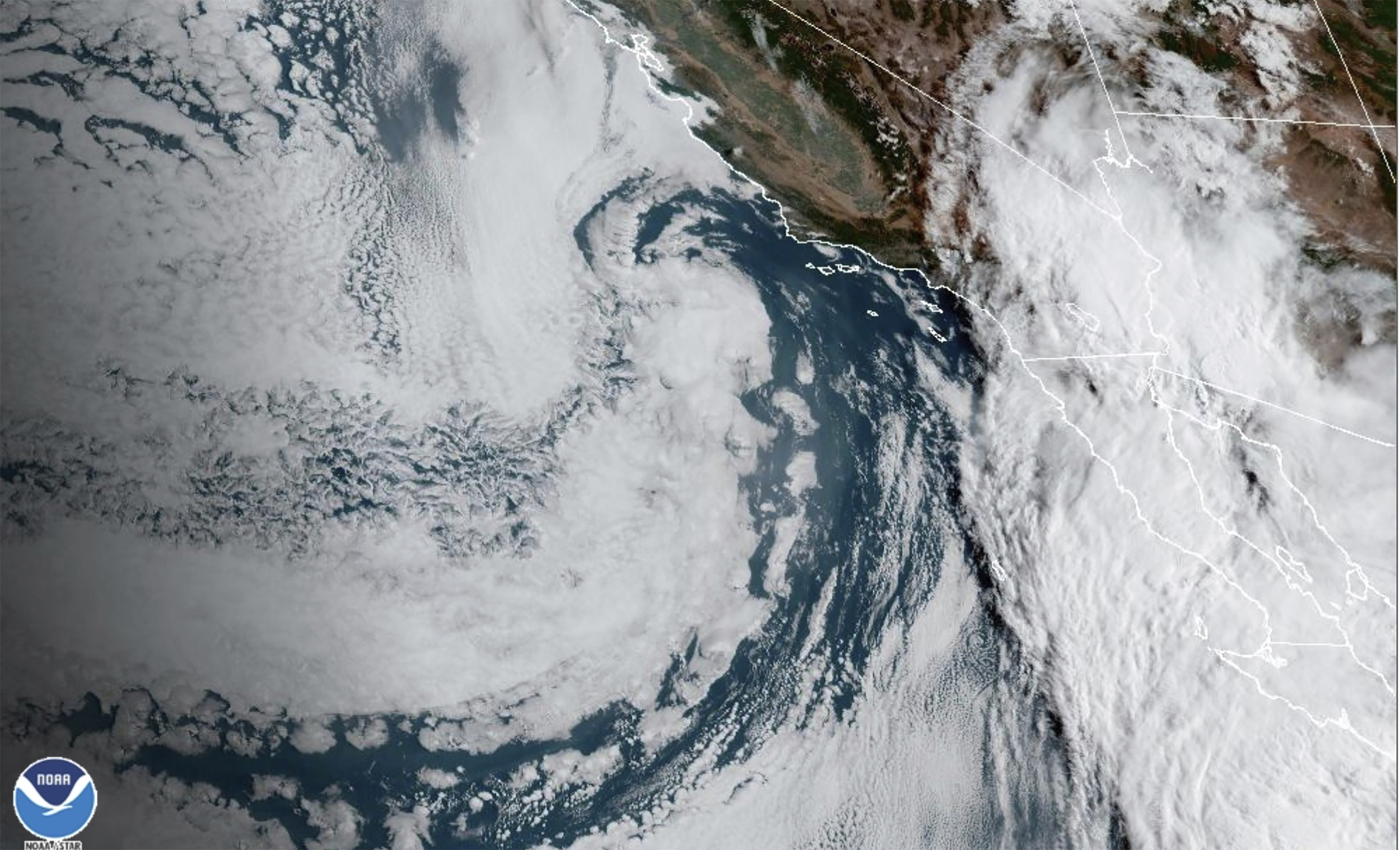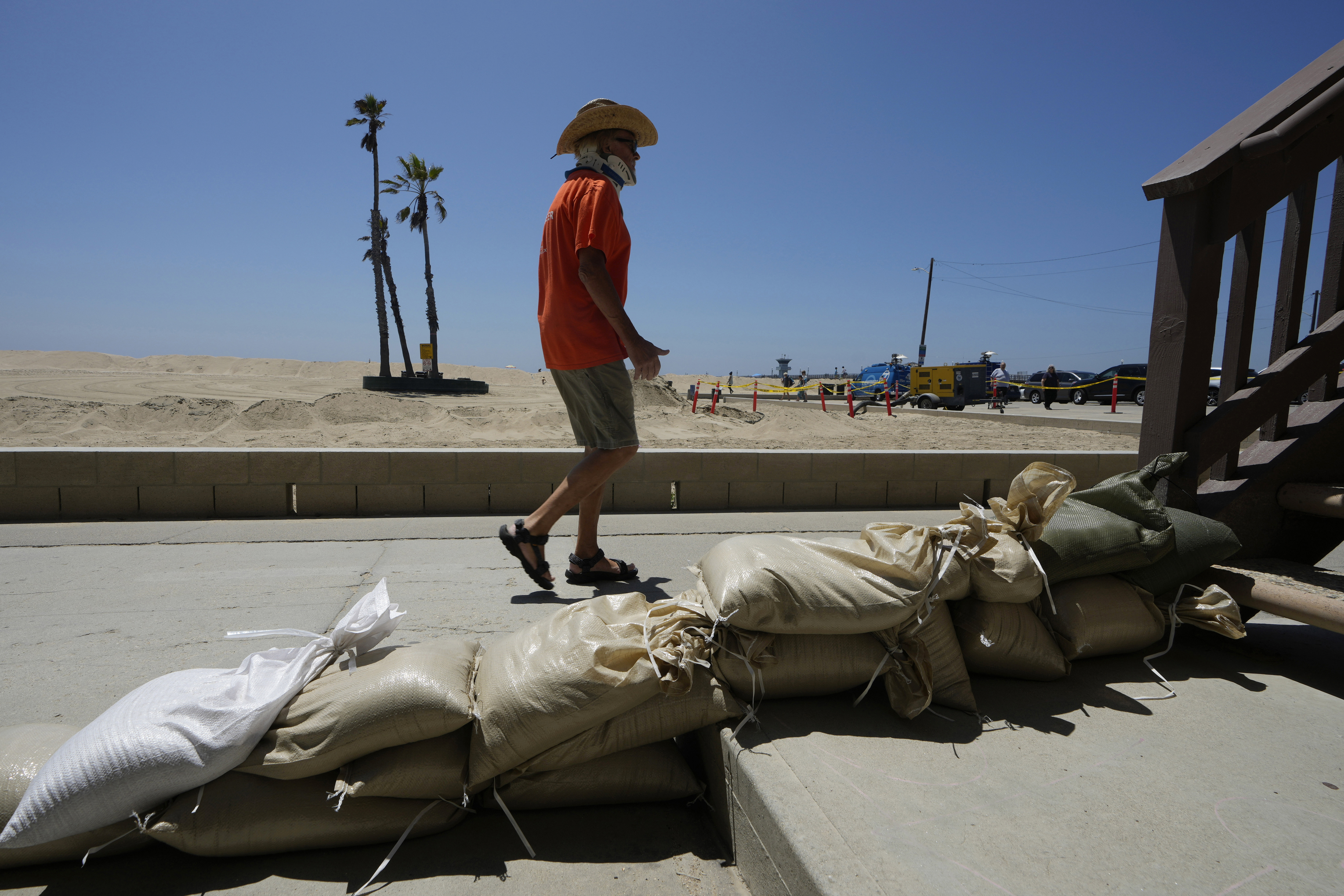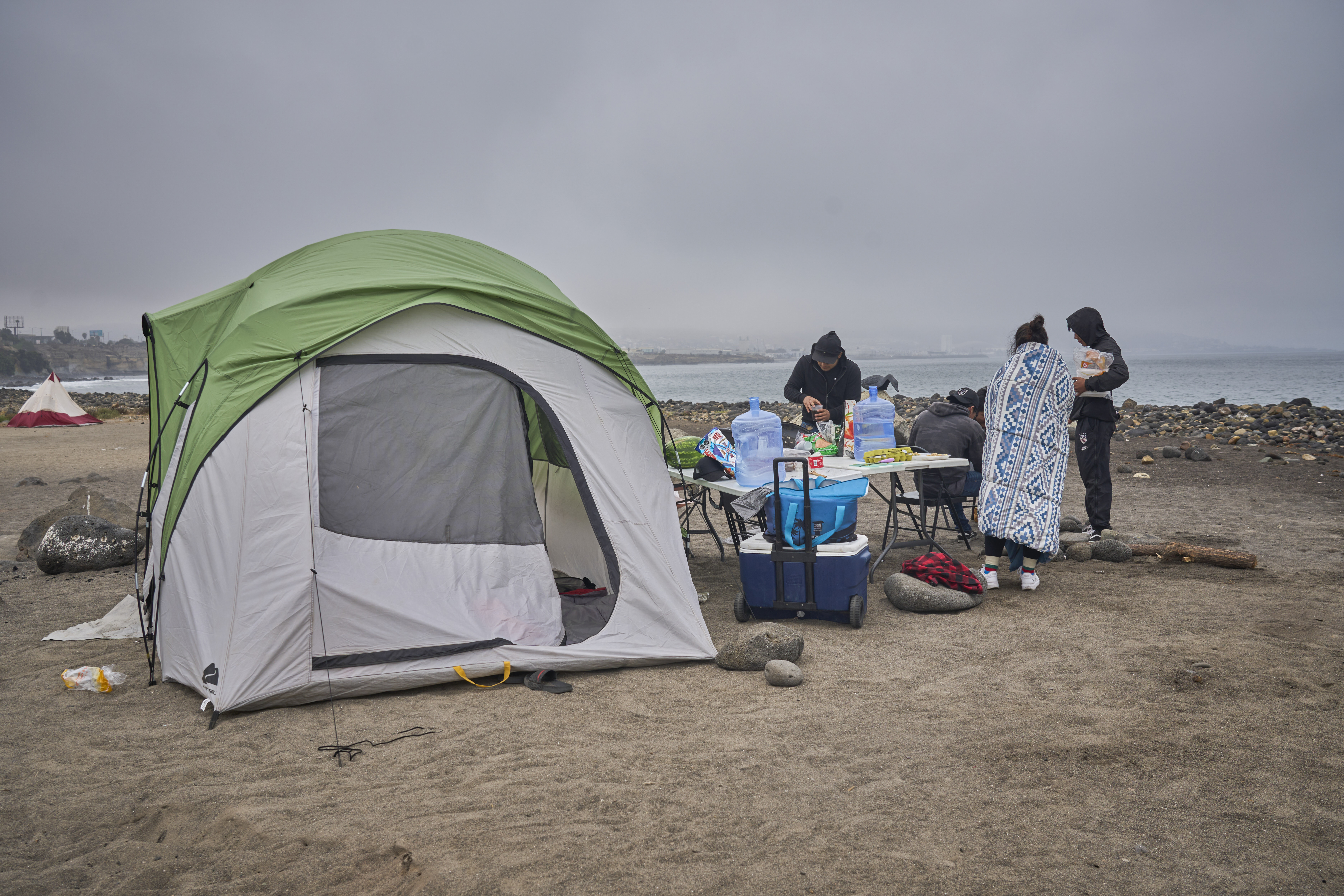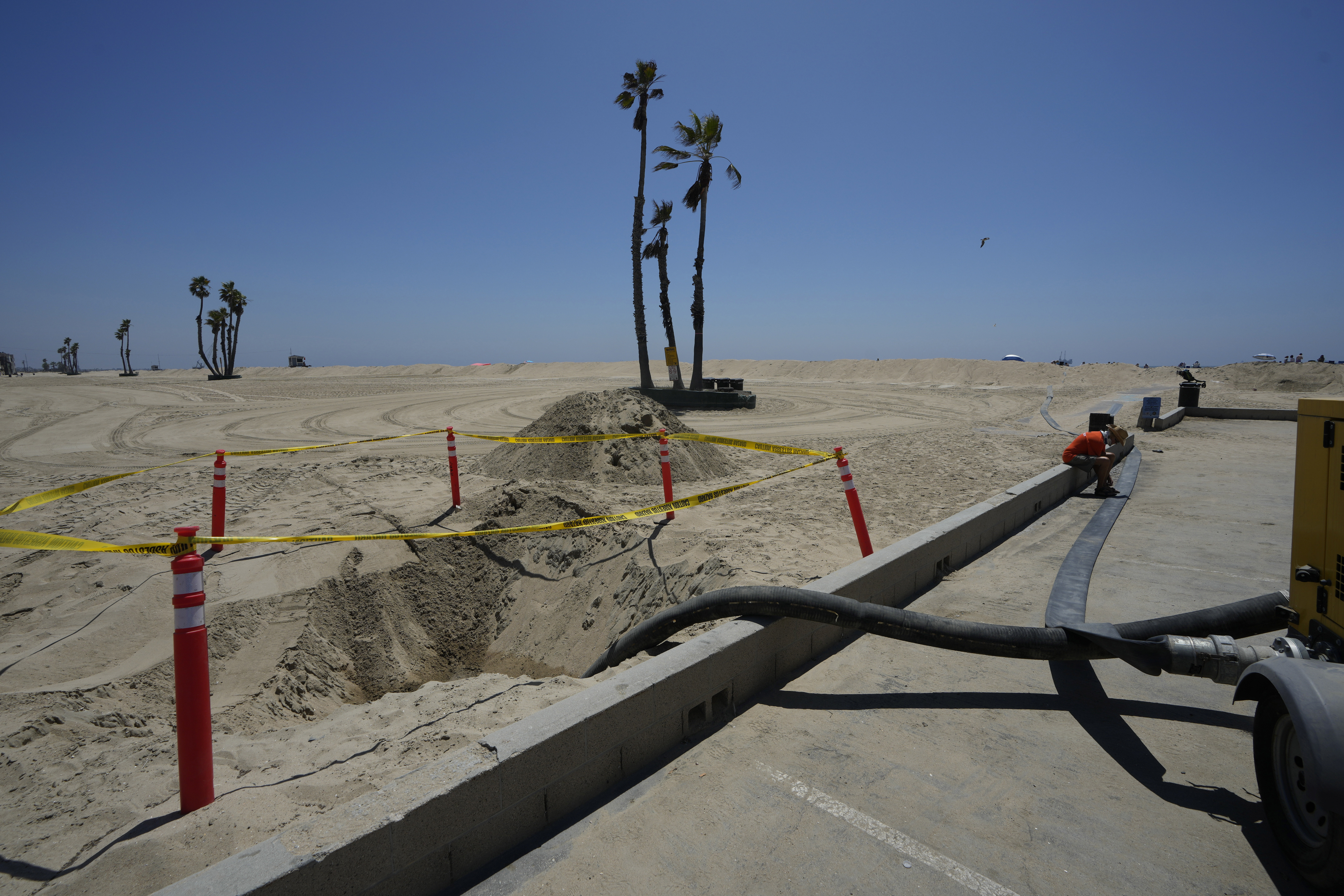Hurricane Hilary headed for Mexico's Baja California on Saturday as the US National Hurricane Centre predicted "catastrophic and life-threatening flooding" for the peninsula and for the southwestern US, where it was forecast to cross the border as a tropical storm on Sunday.
Officials issued an evacuation advisory for the tourist destination of Santa Catalina Island, 37km off the southern California coast, while authorities in Los Angeles scrambled to get the homeless off the streets and into shelters.
Hilary remained a Major Category Three hurricane, set to plow into Mexico's Baja peninsula on Saturday night before rushing north and entering the history books as the first tropical storm to hit Southern California in 84 years.
READ MORE: Neonatal nurse becomes UK's worst child serial killer in recent times after verdict

"I don't think any of us — I know me particularly — never thought I'd be standing here talking about a hurricane or a tropical storm," said Janice Hahn, chair of the Los Angeles County Board of Supervisors.
The US National Hurricane Center issued tropical storm and potential flood warnings for Southern California from the Pacific coast to interior mountains and deserts. The San Bernardino County sheriff on Saturday issued evacuation warnings for several mountain and foothill communities ahead of the storm.
"This is being labeled as historic, life-threatening and potentially catastrophic rainfall for Southern California and a good chunk of the desert Southwest in general," said John Cangialosi, a senior hurricane specialist at the National Hurricane Centre. "That is because we could see about a year's worth of rain from this event for those regions."
READ MORE: US, Japan and South Korea agree to expand security ties
Courtney Carpenter, a National Weather Service warning coordination meteorologist, said experts forecast "a rare and dangerous rainfall event" that is expected to bring flash floods, mudslides, isolated tornadoes and wind damage to Southern California, as well as life-threatening surf conditions and rip currents to the beaches.
"Make no mistake: This is a very, very dangerous and significant storm," said Nancy Ward, director of the California Governor's Office of Emergency Services, during a Saturday news briefing.
Ward said heavy rainfall and strong winds began Saturday, and power outages are expected.
Mexico's Navy evacuated 850 people from islands off the Baja coast, and deployed almost 3000 troops for emergency operations. In Nevada, Governor Joe Lombardo activated 100 Nevada National Guardsmen to provide support in areas that could be impacted by flash floods this weekend.
READ MORE: Maui emergency chief resigns after sirens stayed silent

Hilary rapidly gained strength Friday, becoming an exceedingly dangerous Category Four Major hurricane with top sustained winds of 230km/h at its peak. And though its maximum sustained winds dropped to 185km/h on Saturday, it still was a very dangerous Major Category Three storm.
By midday Saturday, the storm was centered about 570km south-southeast of Punta Eugenia, one of the westernmost spurs on Mexico's southern Baja peninsula. The hurricane was expected to brush past Punta Eugenia before making landfall along a sparsely populated area of the peninsula about 330km south of the Pacific port city of Ensenada.
It was still 1145km south-southeast of San Diego, California. It was moving north-northwest at 26km/h and was expected to turn more toward the north and pick up speed.
READ MORE: Orca dies after half a century in captivity

It is then expected to rake northward up the peninsula, threatening heavy rains and dangerous flooding in the border city of Tijuana, where many homes in the city of 1.9 million cling precariously to steep hillsides.
Mayor Montserrat Caballero Ramirez said the city was setting up four shelters in high-risk zones and warning people to prepare. "We are a vulnerable city, being on one of the most visited borders in the world and because of our landscape," she said.
The US National Park Service closed California's Joshua Tree National Park and Mojave National Preserve to keep visitors from becoming stranded amid flooding. Cities across the region, including in Nevada and Arizona, offered sandbags to safeguard properties against floodwaters. Major League Baseball rescheduled three Sunday games in Southern California, moving them to Saturday as part of split doubleheaders,
SpaceX delayed the launch of a satellite-carrying rocket from a base on California's central coast until at least Monday. The company said conditions in the Pacific could make it difficult for a ship to recover the rocket booster.

US President Joe Biden said Friday the Federal Emergency Management Agency had pre-positioned staff and supplies in the region. "I urge everyone, everyone in the path of this storm, to take precautions and listen to the guidance of state and local officials," he said.
Deputies with the Los Angeles County Sheriff's Department took to the road to urge homeless people living in riverbeds to go to shelters, where cots and food were being arranged.
Officials in Southern California were re-enforcing sand berms, built to protect low-lying coastal communities against winter surf, like in Huntington Beach, which dubs itself as "Surf City USA."
In nearby Newport Beach, Tanner Atkinson waited in a line of vehicles for free sandbags at a city distribution point.

"I mean a lot of people here are excited because the waves are gonna get pretty heavy," Atkinson said.
"But I mean, it's gonna be some rain, so usually there's some flooding and the landslides and things like that."
About 100 people sought refuge at storm shelters in the twin resorts of Los Cabos, at the southern tip of the Baja peninsula, and firefighters used an inflatable boat to rescue a family in San Jose del Cabo after the resort was hit by driving rain and wind. In La Paz, the picturesque capital of Baja California Sur state on the Sea of Cortez, police patrolled closed beaches to keep swimmers out of the whipped-up surf.
Forecasters said the storm could bring heavy rainfall to the southwestern United States, dumping 80mm to 150mm in places, with isolated amounts of up to 250mm, in portions of southern California and southern Nevada.
"Two to three inches of rainfall in Southern California is unheard of" for this time of year, said Kristen Corbosiero, a University at Albany atmospheric scientist who specializes in Pacific hurricanes. "That's a whole summer and fall amount of rain coming in probably six to 12 hours."
The region could face once-in-a-century rains and there is a good chance Nevada will break its all-time rainfall record, said meteorologist Jeff Masters of Yale Climate Connections and a former government in-flight hurricane meteorologist.
